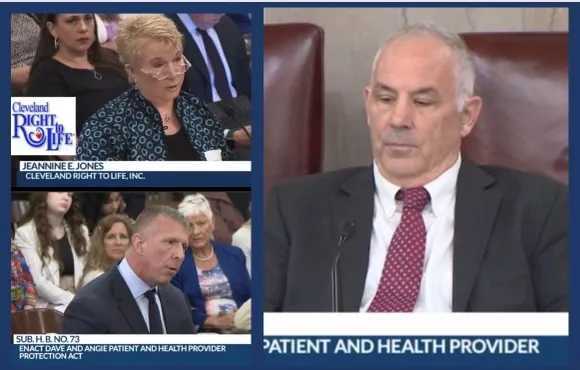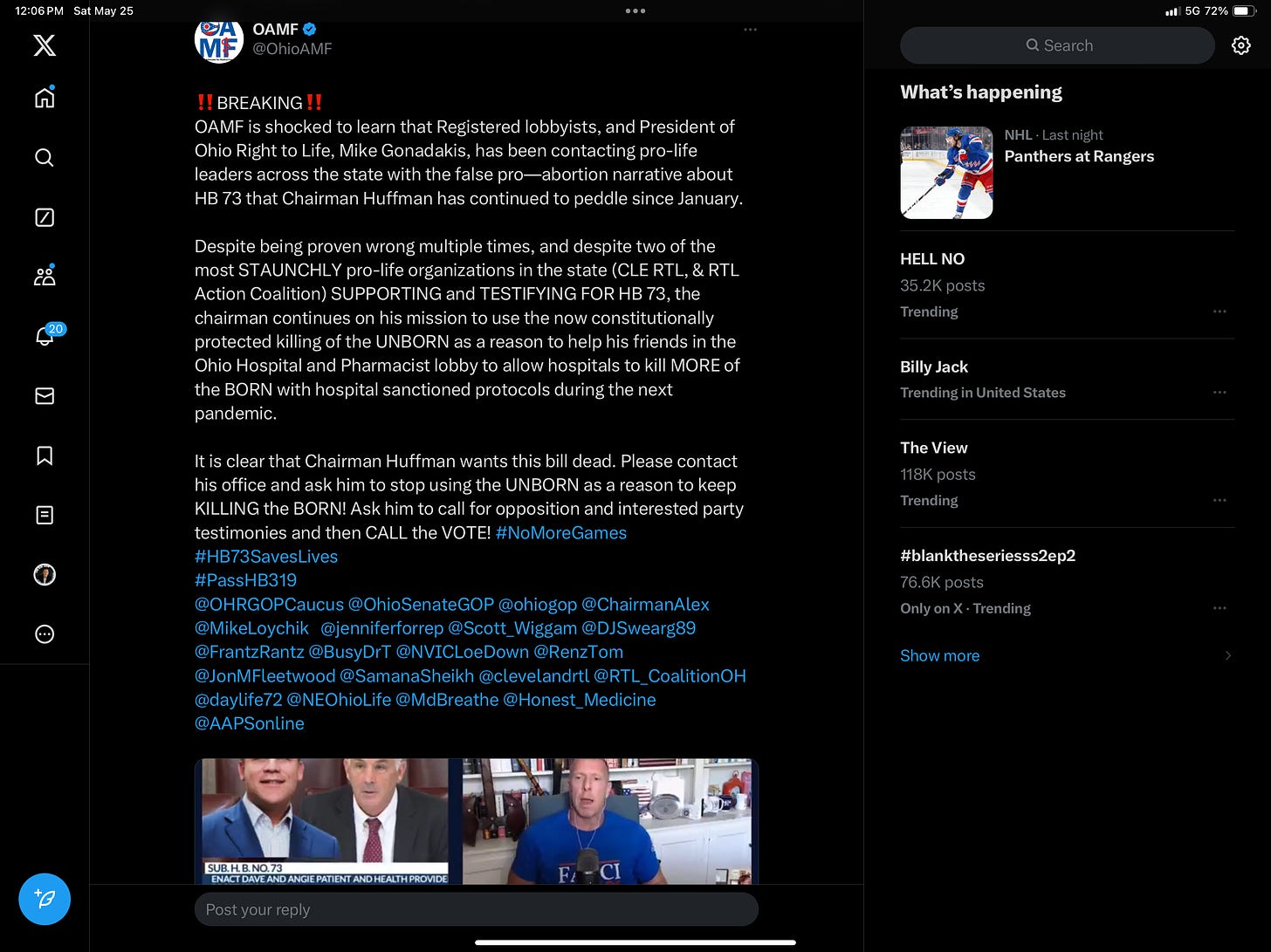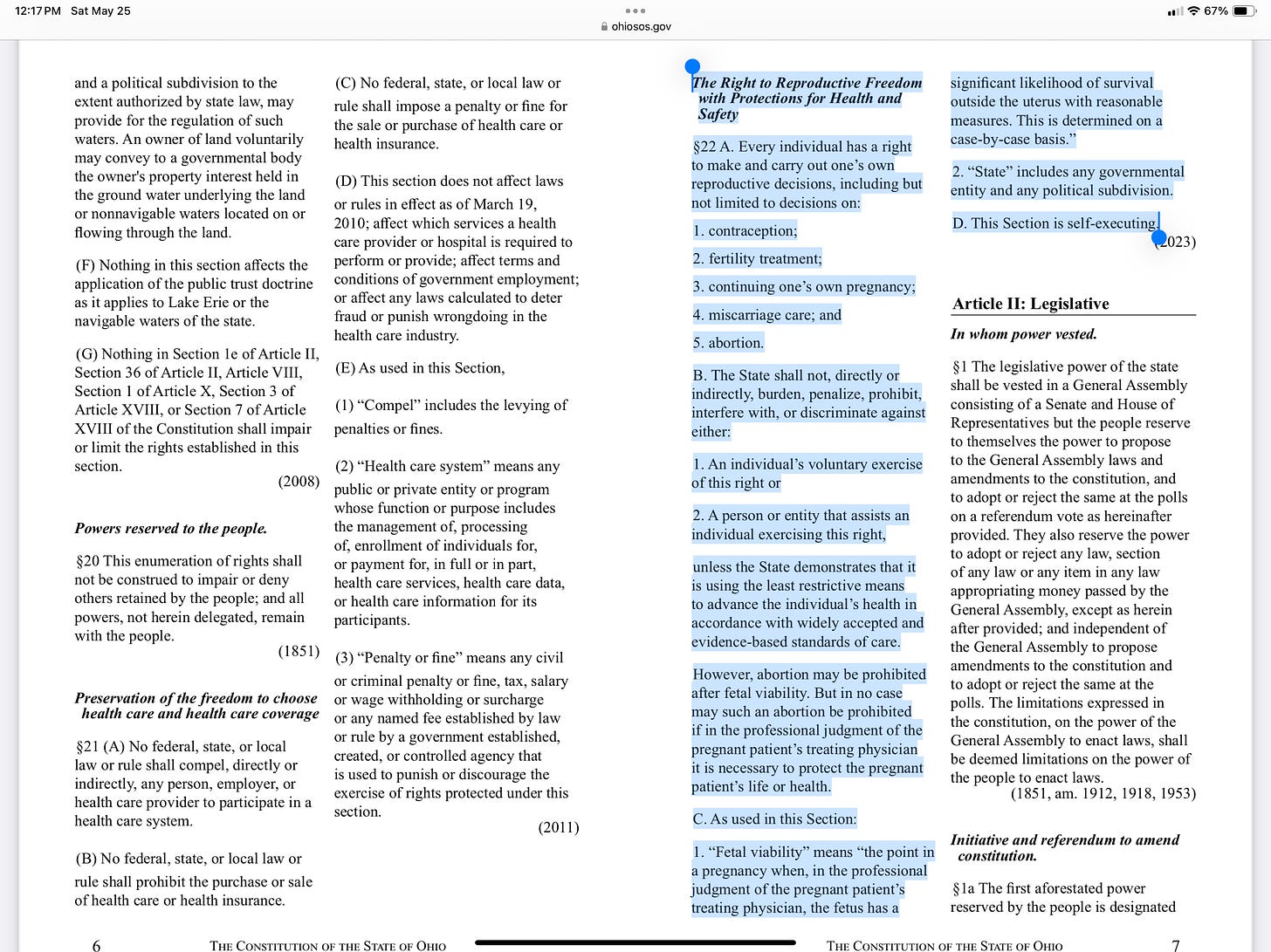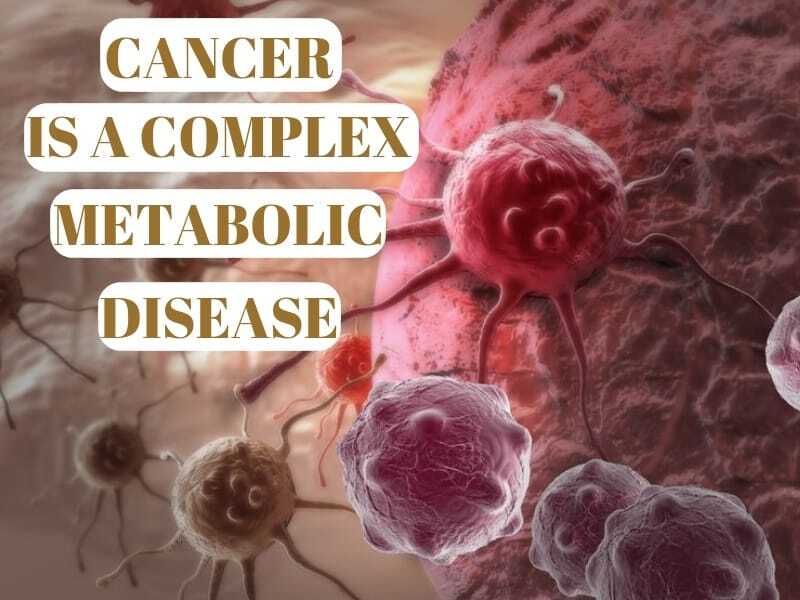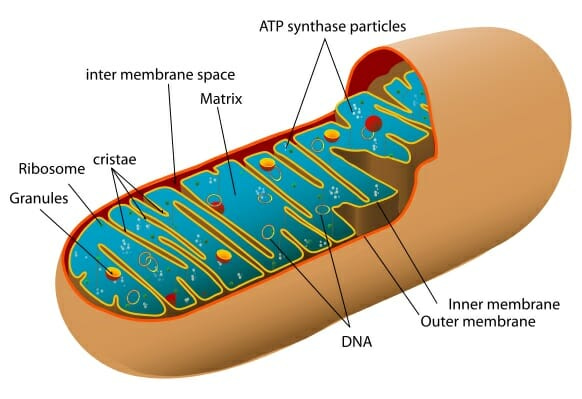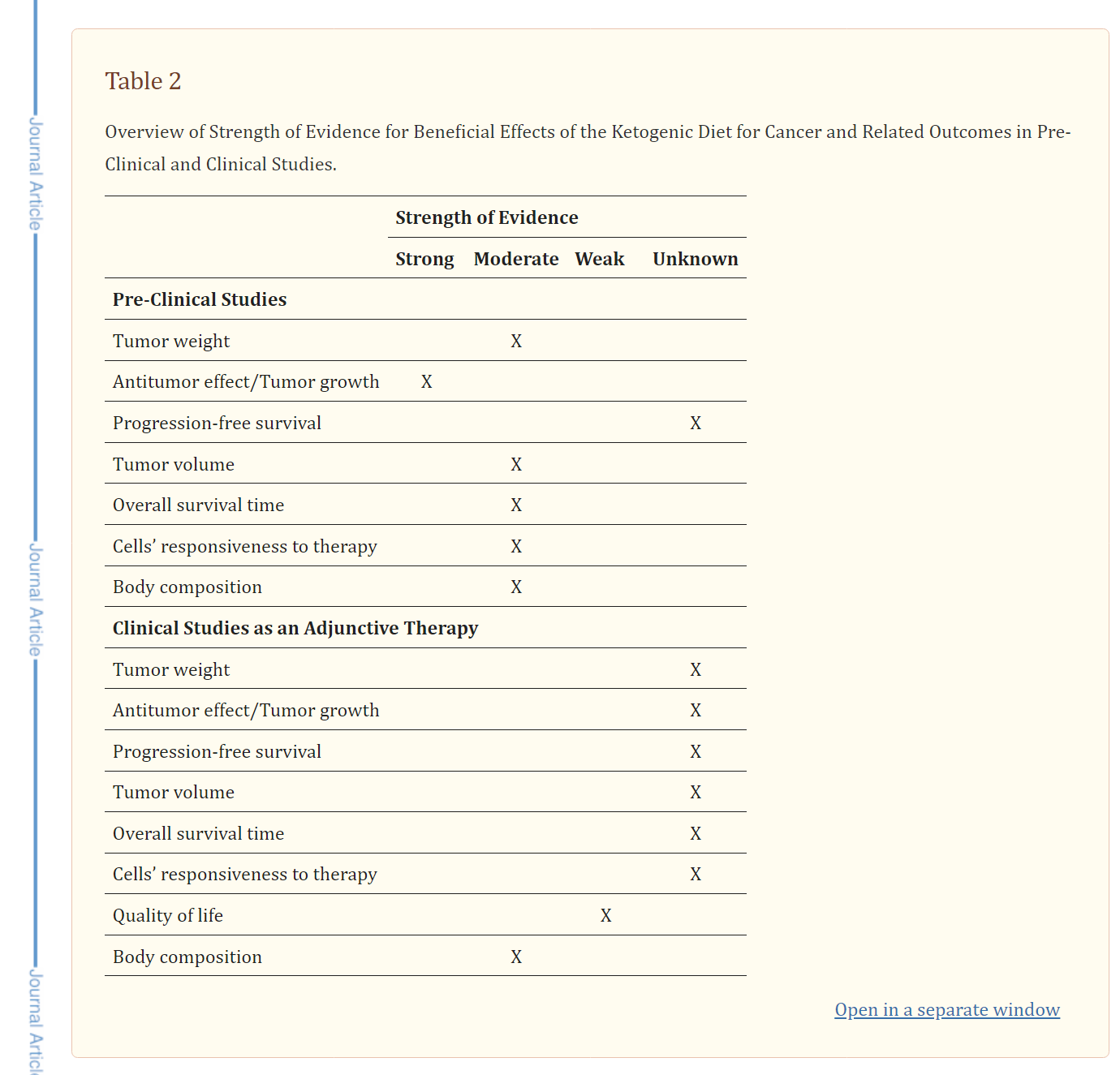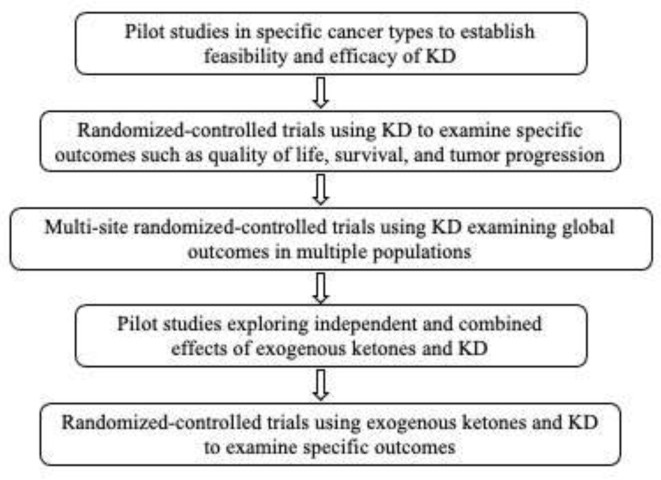As of March 21, 2024, the NIH National Human Genome Research Institute lists the definition of gene therapy as a ‘technique that uses a gene(s) to treat, prevent or cure a disease or medical disorder’. The FDA has a similar definition and currently lists gene therapy as a ‘technique that modifies a person’s genes to treat or cure disease’. According to the FDA’s website there are a variety of types of gene therapy products, two of which are listed below:
Plasmid DNA: Circular DNA molecules can be genetically engineered to carry therapeutic genes into human cells.
Viral vectors: Viruses have a natural ability to deliver genetic material into cells, and therefore some gene therapy products are derived from viruses. Once viruses have been modified to remove their ability to cause infectious disease, these modified viruses can be used as vectors (vehicles) to carry therapeutic genes into human cells.
Interestingly, mRNA and other RNA tech is left out of this list. The reason this is so curious is that “transcribed RNA” is listed as gene therapy in a 2020 FDA document titled Human “Gene Therapy for Rare Diseases”. Transcription is the process by which DNA creates RNA. The “transcribed RNA” is quite literally mRNA (here’s a very simple link explaining: https://www.genome.gov/genetics-glossary/Transcription) Specifically the document (found here: https://www.fda.gov/media/113807/download) states:
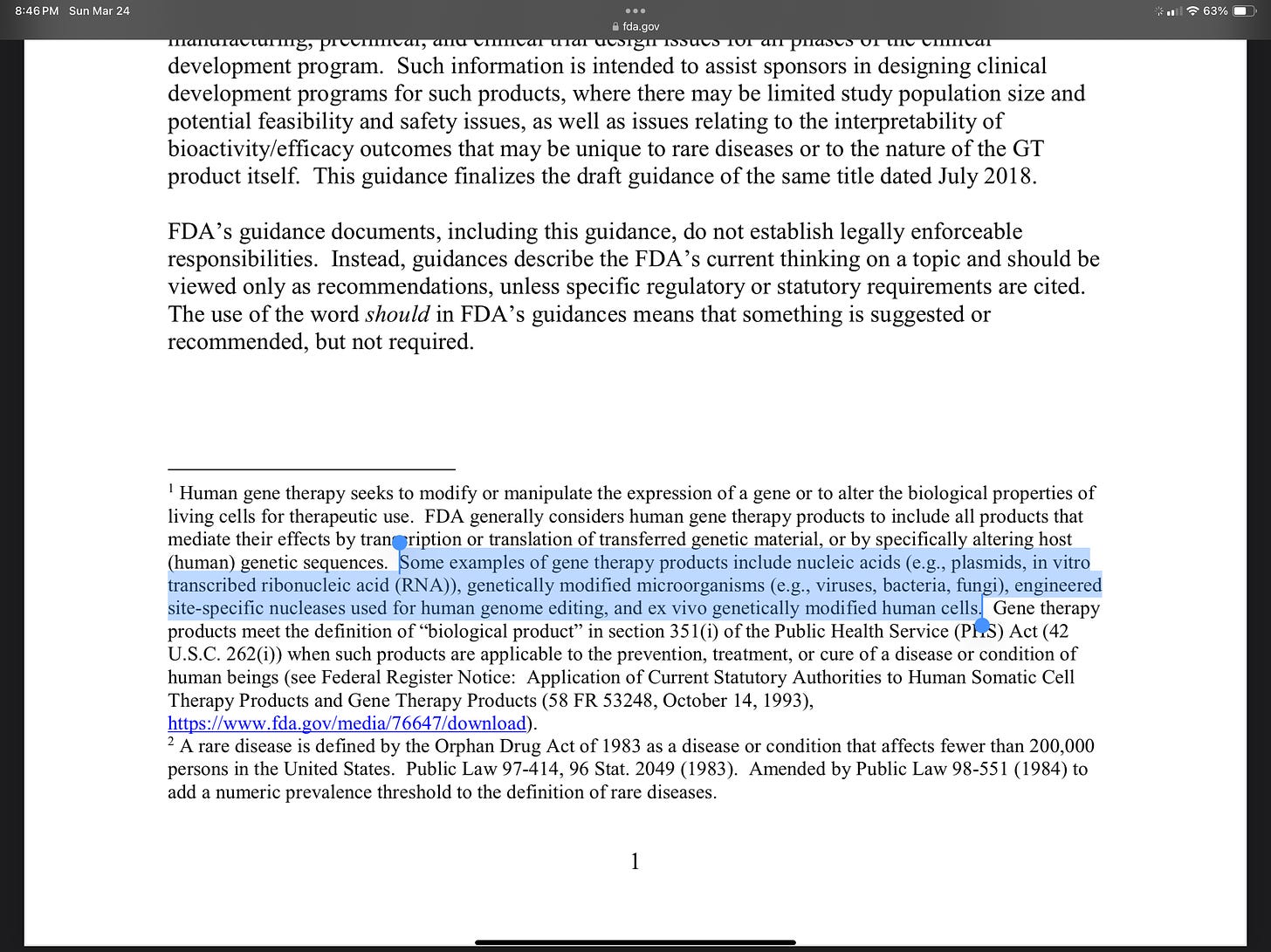
If that’s not enough, the U.S. Department of Health and Human Services, the FDA and the Center for Biologics Evaluation and Research published a 2015 guidance for industry document: Determining the Need for and Content of Environmental Assessments for Gene Therapies, Vectored Vaccines, and Related Recombinant Viral or Microbial Products which defines gene therapies as “products that mediate their effects by transcription and/or translation of transferred genetic material and/or by integrating into the host genome and that are administered as nucleic acids, viruses or genetically engineered microorganisms. The products may be used to modify cells in vivo or transferred to cells ex vivo prior to administration to the recipient.”
“For purposes of this guidance, a vectored vaccine is one that uses a virus or microbe (typically a bacterium), or a DNA plasmid to introduce DNA/RNA encoding for antigens to cells of the body. “Vector” refers to the virus microbe or DNA plasmid used as the carrier.”
This is critical. When we talk about viral vectors they are simply the vehicle by which the DNA/RNA payload is delivered to the cell. Viral and bacterial vectors have the exact same role that lipid nanoparticles have. They carry the payload. It is the payload that makes a product a gene therapy product - not the delivery vehicle.
Creative Biolabs, which specializes in mRNA therapeutics report that studies indicate vectors play a significant role in delivering genes. Over the years, different types of delivery vectors have been designed including, several kinds of ‘virus-based vectors, such as retroviral vectors, lentiviral vectors, adenoviral vectors, as well as adeno-associated viral vectors, that are widely used in gene therapy development’. They report ‘many advanced technologies, such as genetic engineering, recombinant DNA technique, as well as mRNA technology, have been utilized in improving the performance of gene therapy in disease treatments.’
“Currently, mRNA is considered a gene therapy product by the FDA.”
Moderna, 2019 SEC Filing
The EU has mRNA classified as a gene therapy medicinal product. Lobbies have recently called for legislation that would change the definition of gene therapy to exclude mRNA vaccines. In January 2024 BioNTech and Moderna lobbyists hosted a lunch in the European Parliament with members to forward those efforts. They know the mRNA injections are gene therapy and that’s why they’re trying to change legislation.
Dr. Robert Malone, the creator of the mRNA vaccine technology emphatically tells us they are gene therapy products. “As I’ve said repeatedly, it came out of a gene therapy research program. These and the adenoviral vectors are absolutely gene therapy technology applied for the purpose of eliciting an immune response.”
Forget that the CDC changed the definition of ‘vaccine’ in 2021 because it didn’t apply to the Covid-19 vaccine. A vaccine must contain an antigen to trigger the body’s natural immune response and that Pfizer and Moderna’s mRNA vaccines do not contain antigens.
‘The active substance used to elicit an immune response in these vaccines is the mRNA—a form of nucleic acid and the genetic material of the SARS-CoV-2 virus that provides instructions to the body for producing antigens—spike proteins.”
A paper published in the International Journal of Molecular Science reports that this 'mode of action corresponds exactly to the regulatory agencies definition of a gene therapy product’. If you’re still not convinced - just look at the FDA-approved insert for Pfizer’s COMIRNATY mRNA vaccine. “COMIRNATY is a vaccine indicated for active immunization to prevent coronavirus disease 2019 (COVID-19).”

It’s well documented that the COVID-19 injections do not prevent infection, do not protect against disease, and are known to cause serious adverse events and even death. They are experimental gene therapy products masquerading as vaccines. We know that claims that the vaccines do not enter the cell nucleus or interact with the DNA are false. We know that the mRNA from the Covid vaccine persists in the blood contrary to what they told us. We know that the COVID-19 vaccine mRNA spreads to the placenta & umbilical cord blood, penetrates the fetal-placental barrier and reaches the intrauterine environment.
According to the FDA vaccination ‘stimulates the body’s immune system to build up defenses against the infectious bacteria or virus without causing the disease.’ The Cleveland Clinic study proved negative efficacy with these injections: get a shot, get Covid. The FDA’s own document indicates that a vaccine should not cause the disease. If it doesn’t prevent Covid as promised on the FDA-approved package insert and it causes the disease - then it’s not a vaccine. If the available data shows all this and there is no discernible benefit - only risk - then why push them?
I’ve covered this ad nauseum, but I’ll say it again: Moderna and Pfizer’s SEC filings admit that they are gene therapy products. On pages 148 & 149 of Moderna’s 2019 SEC filing you will find:
“No mRNA drug has been approved in this new potential class of medicines and may never be approved as a result of efforts by others or us. mRNA drug development has substantial clinical development and regulatory risk due to the novel and unprecedented nature of this new class of medicines. As a potential new class of medicines, no mRNA medicines have been approved to date by the FDA or other regulatory agency… currently mRNA is considered a gene therapy product by the FDA.”
On page 70 of Moderna’s August 2021 SEC filing that risk factor was documented again. Their Feb 25, 2022, Annual Filing revealed that they were aware of reports that their product was causing adverse events, including heart problems in young men. Instead of being worried about the adverse events and heart damage being reported - they were more worried about their ‘reputation’ and the mRNA agenda that they’re hell bent on pushing.
‘We may observe new, more frequent or adverse events of greater severity in subjects participating in ongoing clinical trials or among those individuals vaccinated with our COVID-19 vaccine. For example, some studies have suggested that our vaccine may be associated with higher rates of myocarditis and pericarditis in young males compared to other COVID-19 vaccines. Unexpected safety issues could significantly damage our reputation and that of our mRNA platform.”
The most recent Moderna annual report published in February 2024 revealed some interesting but not surprising information. These can all be found in the ‘risk factor’ disclosures in the document.
“Gene therapies and mRNA medicines may activate one or more immune responses against any and all components of the drug product (e.g., the mRNA or the delivery vehicle, such as an LNP) as well as against the encoded protein, giving rise to potential immune reaction related adverse events. Eliciting an immune response against the encoded protein may impede our ability to achieve a pharmacologic effect upon repeat administration or a side effect.”
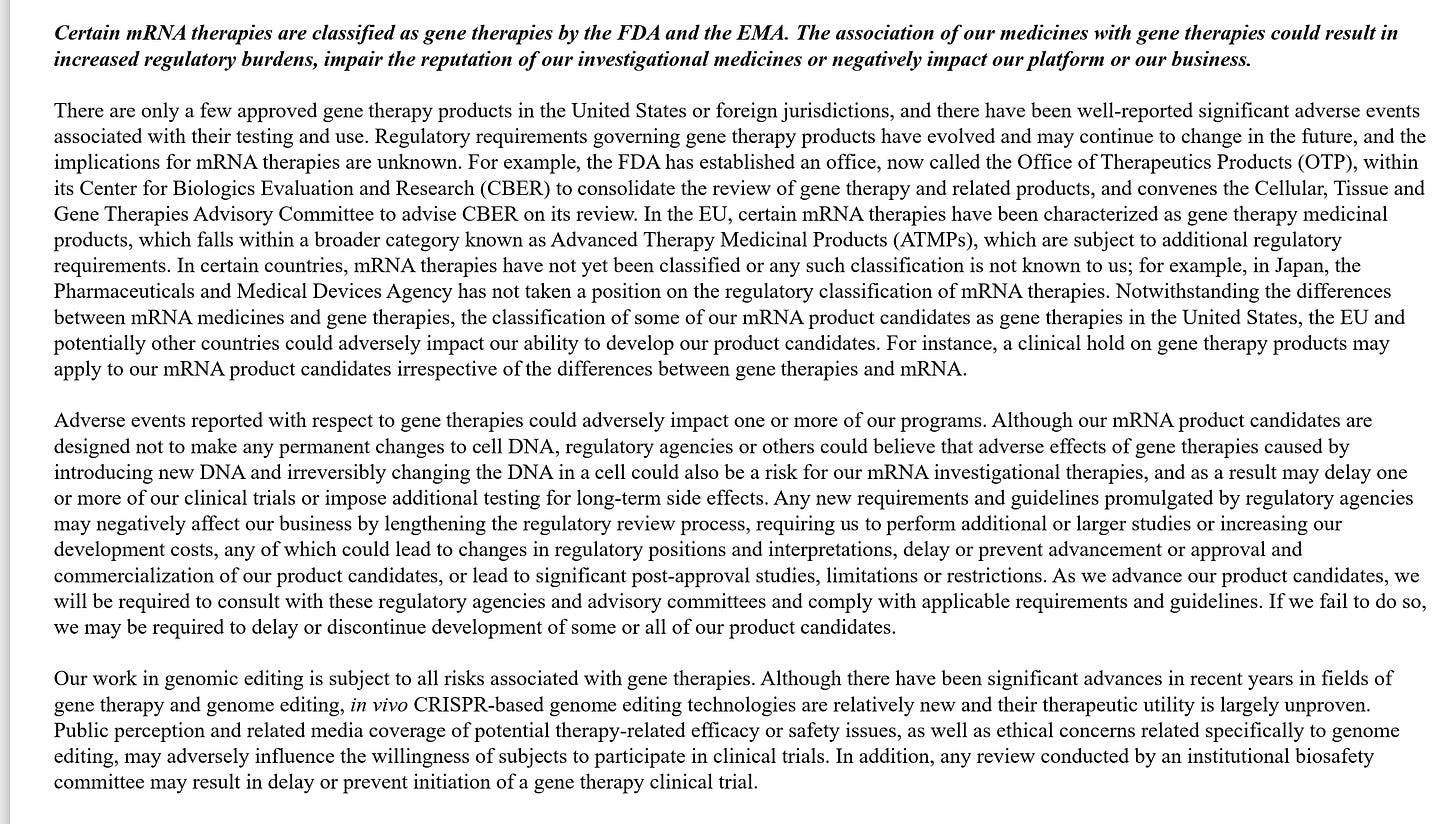
Some interesting takeaways:
There are only a few approved gene therapy products in the United States or foreign jurisdictions, and there have been well-reported significant adverse events associated with their testing and use.
The classification of some of our mRNA product candidates as gene therapies in the United States, the EU and potentially other countries could adversely impact our ability to develop our product candidates.
Although our mRNA product candidates are designed not to make any permanent changes to cell DNA, regulatory agencies or others could believe that adverse effects of gene therapies caused by introducing new DNA and irreversibly changing the DNA in a cell could also be a risk for our mRNA investigational therapies.
Our work in genomic editing is subject to all risks associated with gene therapies. Although there have been significant advances in recent years in fields of gene therapy and genome editing, in vivo CRISPR-based genome editing technologies are relatively new and their therapeutic utility is largely unproven.
In 2013 the US Supreme Court ruled that DNA, occurring naturally - could not be patented. However, they indicated that DNA manipulated in a lab could be patented. Specifically, they mentioned the type known as Complementary DNA (cDNA), also sometimes called copy DNA - a synthetic produced from the molecule that serves as the instructions for making proteins, or mRNA. I’ll bet it’s just a coincidence that these Covid injections serve this very function. Genomics experts and doctors like Dr. Peter McCullough continue to sound the alarm on studies that show cDNA contamination in these injections and call for their immediate discontinuation.
“A naturally occurring DNA segment is a product of nature and not patent eligible merely because it has been isolated, but cDNA is patent eligible because it is not naturally occurring.”
U.S. Supreme Court, ASSOCIATION FOR MOLECULAR PATHOLOGY ET AL. v. MYRIAD GENETICS, INC., ET AL.
Sources:
(1) Covered Up: mRNA Shedding, Transmissibility and Cancer. (substack.com)
https://expose-news.com/2023/12/06/plasmid-dna-in-pfizer-c19vaccine-enters-nucleus-of-cells/
Why did CDC change definition for ‘vaccine’? Agency explains | Miami Herald
mRNA for Gene Therapy - Creative Biolabs (creative-biolabs.com)
Subscribe to my substack: https://tomrenz.substack.com/p/the-fact-checkers-say-the-covid-jabs





